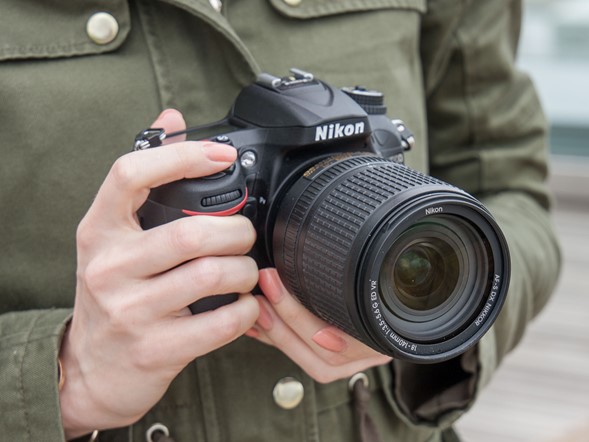Nikon D7200 Review
Semi-professional cameras are a special class of cameras, which in fact has always existed, but has strengthened its position even more in the digital era. Such cameras combine functions and settings, putting them on separate characteristics on a par with top-end professional models, with successful compromise solutions that make the cost of such models affordable for most enthusiastic photographers. Actually, for enthusiastic photographers - enthusiasts, I really like this word - such models are created. After all, only having some knowledge in the field of photography, you can unleash the potential of a semi-pro SLR, try out its advantages over a simple amateur model.
View prices and buy Nikon D7200.
In the Nikon lineup of recent years, semi-professional models are represented by the 7000th series. The very first model of the line - Nikon D7000 - was released in 2010. Then the camera combined the most advanced features together with a nice price. After two and a half years, it was replaced by the Nikon D7100 : a higher resolution matrix, the absence of an anti-fog filter, and perfect autofocus made it easy to bypass the predecessor in all respects. In March 2015, the Nikon D7200 was introduced.. It is this model that will become the hero of our test in the format of “Week with an Expert”. Day after day, we will publish new parts of a large camera review, testing it in different conditions. Let's see what improvements and new features await the enthusiastic photographers in this camera.
Nikon D7200 uses a 24.2-megapixel APS-C format CMOS sensor with a physical size of 23.6 x 15.6 mm
Any modern camera starts with a matrix. We start with her and our review of the Nikon D7200 . It uses a 24.2-megapixel CMOS sensor format APS-C with a physical size of 23.6 x 15.6 mm. The matrix, as in the previous model, is deprived of an anti-fouling optical low-pass filter, artificially reducing image detail. So the photographer has the opportunity to get really high detail pictures, however, “in the load” he will receive the risk of moire. But we will check this in our test ...
Click on the image to open it in a new window in full resolution.
NIKON D7200 / Nikon AF-S DX Zoom-Nikkor 17-55mm f / 2.8G IF-ED Settings: ISO 100, F8, 1/160 s, 36.0 mm equiv.Download RAW
Even in the number of pixels, the sensor used in the Nikon D7200 differs from the Nikon D7100 sensor. Obviously, there is another, new matrix. This is also claimed by company representatives, adding that the matrix differs from that installed in the Nikon D5500 .
But the differences with the previous model are not limited to this. The new matrix required a new “strapping”. The processor was replaced by a more powerful EXPEED 4. The buffer volume was significantly increased, which is especially important for serial shooting. We will check the possibilities of serial shooting in practice. In the meantime, we can only say one thing: the camera confidently shoots at 6 frames / s in full resolution, and when using the crop factor x1.3 relative to the original frame size (and this option is in the camera!), The speed increases by one more shot per second .
The use of a new processor has reduced power consumption. Compared to the Nikon D7100, the charge of the same EN-EL15 lithium battery is now enough for more frames. The officially declared resource is 1110 shots instead of 950 from the previous model.
The autofocus system has also undergone significant improvement. The 3500DX II Multi-CAM system still consists of 51 points, 15 of which are cross-shaped. However, now all points have an increased sensitivity of -3 EV. The Nikon D7100 autofocus sensitivity was -2 EV. By the way, the Nikon D7200 inherited a “screwdriver" from the previous model - a mechanical autofocus drive built into the camera, which is necessary for the correct operation of autofocus lenses without a built-in motor (they do not have an AF-S index in the name).
The projection on the bayonet in the lower left is the same “screwdriver”
Video capabilities are still limited by Full HD resolution. 4K still know how to shoot units of cameras. And is such a video shooting needed in the camera? But the frame rate in the Nikon D7200 increased to 50/60 frames / s when using crop x1.3. In conventional shooting using the entire matrix area, the video is still limited to 30 frames / s. It is possible to shoot a clean uncompressed signal from the HDMI output for recording to an external recorder.
To the joy of videographers, the Nikon D7200 is equipped with a microphone input, headphone output and HDMI output with the ability to capture a clean uncompressed signal
For the convenience of subsequent installation, a Flat Picture Control profile is provided, which is familiar to us from older Nikon models. And fans of time-laps developers indulged in adding the function of time-lapse video recording.
Of the most notable improvements, it is also worth noting the appearance of an integrated Wi-Fi module with an NFC function to simplify the connection with mobile devices. Apparently, the experience of using wireless communication in amateur cameras turned out to be so successful that Nikon also projected it on a semi-pro model. Let me remind you that using a wireless communication module, you can easily exchange data between the camera and a smartphone, as well as remotely control the camera.
NFC tag located next to the memory card slot
The only thing that has remained virtually unchanged is the magnesium dustproof, waterproof housing and ergonomics of the Nikon D7200 . Any Nikonist can easily find a common language with the new camera. The location of the controls is very similar to the previous model. The controls in this camera are finely tuned, which we will discuss in detail in the second part of our test.
Water tightness of Nikon D7200


